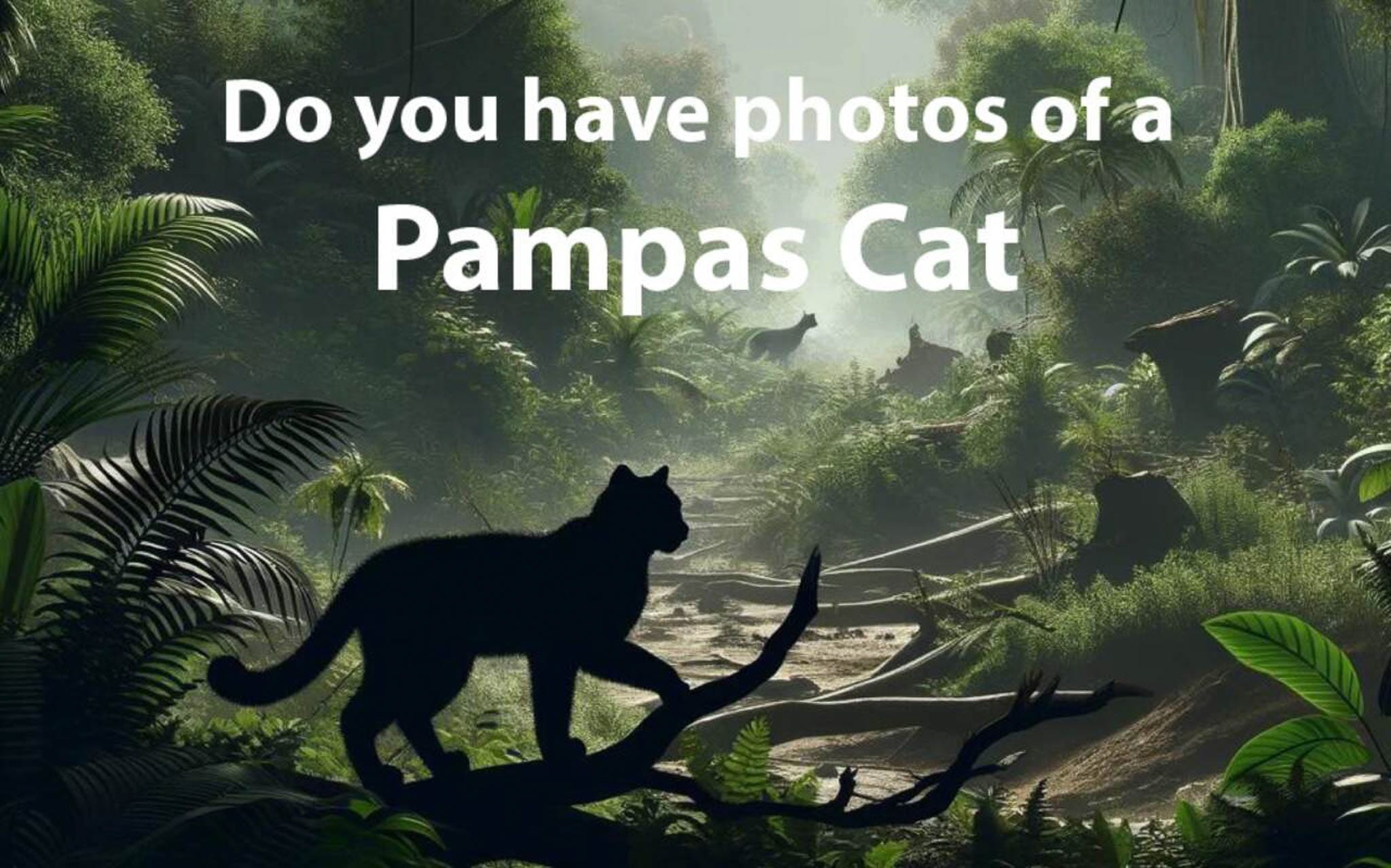Physical description of Pampas Cats
Pampas cats are generally about half a meter long with a weight of up to 5 kg. This is typical for most small cats. The fur of the pampas cat ranges from grey to brown. Some have rusty colored spots and stripes. This varies with regions and habitats. Most cats have lighter-colored underparts.
In colder climates, the fur is generally a bit longer, though long fur is not uncommon in Brazil either. In these cases, the fur is a bit thinner than in the colder regions further south.
Distribution and habitat of Pampas Cats
The Pampas Cat’s range stretches across most of Southern South America. From the Andes to the Atlantic and from Patagonia to the Amazon, the pampascat lives in almost all of the continent’s habitats but is mainly found in the grasslands known as pampas. The forests of the Andes and the wetlands of Paraguay are also typical habitats.
While grassland and open forest are its preferred habitats, pampas cats can still be found in wetlands and more dense forests. The one habitat in South America that it avoids is the tropical rainforest.
Pampas Cat behaviour
As always with nocturnal cats, there is very little observation possible. However, some individuals have been observed during the day, so more information may become available with more extensive research. Also, modern camera traps will help to gather more information.
For the moment, information on how pampas cats behave is difficult to find. Also, modern camera traps will help to gather more knowledge.
What do Pampas Cats eat?
The prey of the pampas cat is mostly small mammals and small birds. While the pampas cat hides from the human population, when they do come in contact, poultry farmers need to be careful as it is known to prey on domestic birds, even if they might be larger than their regular targets.
Mating and Parental care of Pampas Cats
It doesn’t seem that the pampas cat is much different from other cats. They are one of the lesser-studied species, and not everything is known about them. What we do know is very similar to other similarly sized cat species.
Litters probably number two or three kittens, which are born after about three months of gestation.
Impact of Pampas Cats on the human economy
The pampas cat was previously hunted for its fur. This brought some monetary value to the areas in which it is found. Today, that economic value is gone, and in areas where it preys on poultry, there is some superficial disadvantage to having the cat around. However, we know that maintaining biodiversity has long-term economic advantages.
Conservation status and human impact on Pampas Cats
The biggest threat is – no surprises here – habitat destruction. Farming, especially cattle farming in the pampas, has reduced both natural habitat and natural prey species, making life difficult for the pampas cat.
Being protected from hunting since the late 1980s, this is no longer a major threat. However, previous hunting and its naturally low population density on the pampas grasslands of Argentina and Uruguay mean that it is also threatened by simply having small overall populations.
Other important information about Pampas Cats
Very little is known about the pampas cat. One might imagine otherwise, given its wide range from Patagonia to the equator. However, it has quite a low population density and is quite elusive. As a result, studies haven’t been extensive, and the cats are still poorly understood.










